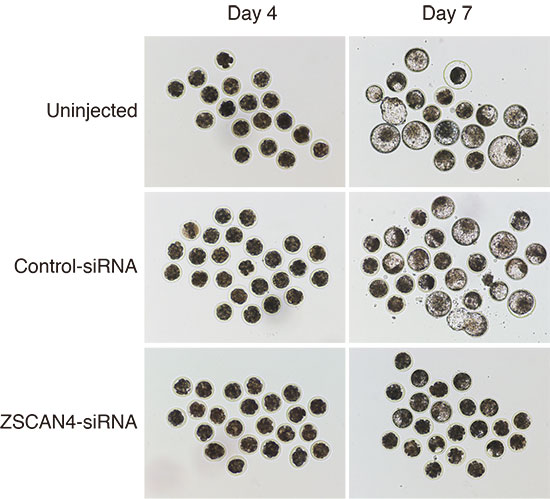- 著者
- Kazuki TAKAHASHI Yasuyuki KANEKO Akiko SHIBANAI Shushi YAMAMOTO Ayana KATAGIRI Tatsuyuki OSUGA Yoshiyuki INOUE Kohei KURODA Mika TANABE Tamaki OKABAYASHI Kiyokazu NAGANOBU Isao MINOBE Akatsuki SAITO
- 出版者
- JAPANESE SOCIETY OF VETERINARY SCIENCE
- 雑誌
- Journal of Veterinary Medical Science (ISSN:09167250)
- 巻号頁・発行日
- pp.22-0010, (Released:2022-03-24)
- 被引用文献数
- 17
The hepatitis B virus (Hepadnaviridae) induces chronic hepatitis and hepatic cancer in humans. A novel domestic cat hepadnavirus (DCH) was recently identified in several countries, however, the DCH infection status of cats in Japan is unknown. Therefore, we investigated the DCH infection rate of 139 cat samples collected in Japan. We identified one positive blood sample (0.78%) from a 17-year-old female cat with chronically elevated alanine aminotransferase. Phylogenetic analysis demonstrated that the DCH strain identified in this study is genetically different from strains in other countries. Further investigations are required to elucidate the evolution of DCH and the impact of DCH infection on hepatic diseases in domestic cats.
1 0 0 0 OA The necessity of ZSCAN4 for preimplantation development and gene expression of bovine embryos
- 著者
- Kazuki TAKAHASHI Pablo J. ROSS Ken SAWAI
- 出版者
- THE SOCIETY FOR REPRODUCTION AND DEVELOPMENT
- 雑誌
- Journal of Reproduction and Development (ISSN:09168818)
- 巻号頁・発行日
- pp.2019-039, (Released:2019-04-25)
- 被引用文献数
- 9
Zinc finger and SCAN domain containing 4 (Zscan4) is a gene that is specifically expressed during zygotic genome activation (ZGA) in mouse preimplantation embryos, and a reduction of Zscan4 transcripts leads to developmental failure. In mouse embryonic stem cells (ESCs), Zscan4 is expressed transiently in as little as 1–5% of the cell population. Zscan4 has also been shown to enhance the efficiency of mouse induced pluripotent stem cells (iPSCs) generation and their quality. Although ZSCAN4 plays important roles in murine embryos and stem cells, its expression and role in bovine embryos is unknown. This study examines ZSCAN4 transcripts in bovine embryos at various developmental stages and attempts to elucidate the functions of ZSCAN4 during bovine preimplantation development. ZSCAN4 transcripts were found to be upregulated at the 8- and 16-cell stages. We next attempted ZSCAN4 downregulation in bovine early embryos by RNA interference and evaluated developmental competency and transcripts levels of genes involved in ZGA and iPSCs generation. Although the bovine embryos injected with ZSCAN4-siRNA could develop to the 8-cell stage, very few were developing beyond the 16-cell stage. PIWIL2 expression was reduced in ZSCAN4 downregulated embryos. It is possible that ZSCAN4 downregulated embryos fail to regulate gene expression during ZGA. Our results indicate that ZSCAN4 is an important factor for the preimplantation development of bovine embryos.
